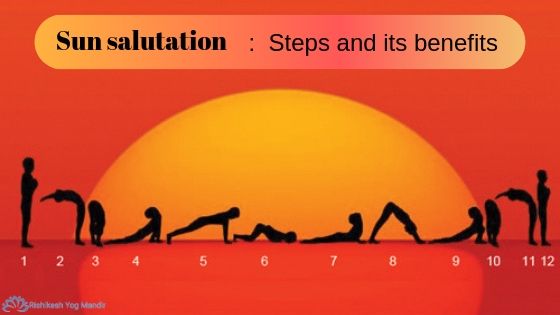An integral part of yogic sessions, sun salutation, has always been the foundation for practicing a series of various asanas or yogic posture like forwarding or backbend poses. Our history reveals that practicing Surya Namaskar is a well-known discipline for healthy well being. The worshiping of the sun has been the part of our Vedic civilization also in Egypt for good health and harvest as the sun is one of the significant sources of energy.
How to Do Surya Namaskar:
A series of twelve powerful yoga postures, Surya Namaskar is considered as one of the best cardiovascular exercises. Traditionally it is best to practice Surya Namaskar on an empty stomach in the morning. It comprises of two sets, and each set is composed of twelve yogic postures. The practice of these twelve poses with proper sync with breathing movement leads to the beautiful balance of health and joy in our life. It is also used for warm up in yoga teacher training programs student do it stating of the session.
Besides its health benefits, it is a way to express our gratitude to the sun as a source of abundance.
Though there are several version of sun salutation, one must stick to a particular version and try to practice it daily.
Steps of Surya Namaskar:
Pranamasana: Stand firmly on your mat, keep your feet together and equally balance your weight on your both feet together and relax. As you will breathe in then lift your both arms in the position of prayer and then exhale slowly.

Udharva hastaasana: Inhale deeply, bend you back little and Raise your hands while pushing your hips forward.
Hasta padasana: While exhaling bend forward from your waist, while keeping your spine erect and brings your palm besides your feet.
Ashwa Sanchalasna: Push your right leg as far as possible while breathing in and balance your body weight on your left legs and look upwards.
Dandasana: As you breathe out, pull your left leg back and bring your body in a plank position.
Ashtanga Namaskara: Gently bring your knees to the floor and exhale, lift your hips slowly and gently slide forward and place your chin between your palm. Your hands, feet, chest, knees, palms basically your eight parts of the body should touch the floor.
Bhujangasana: Slide forward and lift your chest forward into a cobra pose and look upward. Ensure to stretch according to the limit of your body.
Adho Mukha savasana: Exhale, lift your hips and tail bone up while keeping your feet firm on the floor and make an inverted ‘V” pose.
Ashwa Sanchalasna: Inhale deeply and bring your right leg forward and place it between your palms and put your left leg behind. Stretch your hips and look up to the floor.
Hastapadasna: Inhale and move forward your one foot and bring others. Keep your hands firmly on the floor though you can bend your knees if it is necessary.
Hastauthanasna: Inhale deeply and pull your spinal cord. Raise your hands up and bend you back little and slightly push your hips forward.
Tadasana: Bring your arms down, breath out slowly, and relax your body.
Overall benefits of Surya Namaskar:
There are many benefits of sun salutation for healthy wellbeing. Some important benefits are:
It helps in stretching, relaxing, and toning of the body.
It is an excellent cardiovascular workout and ideal for weight loss.
It strengthens our immune system and also stimulates our nervous system.
It’s contraction and stretching of abdominal muscle leads to healthy digestion. Sun salutation is one of the most comprehensive practices of your yoga teacher training in India. This technique comprises combnation of pranayama and yoga asanas. It is a practice that bestowed by our sages to establish harmony through to the energy systems(body) of the practitioner.
Also read : Chakrasana (wheel pose): steps benefits and precautions
